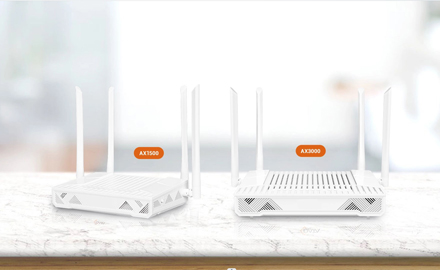Huawei's Optical Line Terminal (OLT) is a crucial component in Fiber to the Home (FTTH) or Fiber to the Premises (FTTP) networks, serving as the convergence point for multiple optical network terminals (ONTs) or Optical Network Units (ONUs) to connect to the wider network infrastructure. Its classification typically revolves around various technical aspects, including its capacity, features, and deployment scenarios.
1. Capacity Classification: OLTs can be classified based on their capacity to handle subscribers and bandwidth:
- Small-scale OLTs: These are designed for smaller deployments, such as in residential buildings or small businesses, with the capacity to serve a limited number of subscribers, usually up to a few hundred.
- Medium-scale OLTs: These are intended for larger deployments, such as in medium-sized residential complexes or business parks, capable of serving several hundred to a couple of thousand subscribers.
- Large-scale OLTs: These are built for extensive deployments, such as in densely populated urban areas or enterprise-level networks, with the capacity to serve thousands to tens of thousands of subscribers.
2. Technology Classification:
- GPON OLTs: These utilize Gigabit Passive Optical Network (GPON) technology, which is one of the most commonly deployed optical access technologies, offering high bandwidth and efficiency.
- EPON OLTs: These employ Ethernet Passive Optical Network (EPON) technology, another popular standard for FTTH deployments, especially in enterprise settings.
- XG-PON OLTs: These support 10-gigabit symmetric passive optical network technology, providing even higher bandwidth than GPON or EPON for demanding applications or high-density areas.
- XGS-PON OLTs: These are an evolution of XG-PON, offering symmetrical 10 Gbps speeds both upstream and downstream, suitable for ultra-high-speed broadband services.
3. Feature-based Classification:
- Basic OLTs: These offer fundamental functionalities for subscriber management, traffic aggregation, and service provision.
- Advanced OLTs: These include additional features such as enhanced Quality of Service (QoS) capabilities, advanced security measures, and support for more sophisticated network architectures like virtualization or Software-Defined Networking (SDN).
- Carrier-grade OLTs: These are designed for telecommunications carriers or service providers, meeting stringent reliability, scalability, and performance requirements to ensure uninterrupted service delivery to a large subscriber base.
4. Deployment Scenario Classification:
- Central Office (CO) OLTs: These are typically deployed in the central offices of service providers, serving as the primary aggregation point for multiple optical distribution networks (ODNs) and handling large volumes of subscriber traffic.
- Remote OLTs: Also known as Remote Line Terminals (RLTs), these are deployed closer to the subscribers, often in street cabinets or distribution points, to reduce the length of fiber connections and improve service quality, particularly in areas with dispersed populations or difficult terrain.
- OLTs for Specialized Applications: Some OLTs are designed for specific applications such as mobile backhaul, smart grid connectivity, or industrial automation, catering to the unique requirements of these sectors.
5. Integration Classification:
- Standalone OLTs: These are independent units dedicated solely to OLT functions, providing a dedicated platform for managing optical access networks.
- Integrated OLTs: Some OLTs are integrated into larger network equipment, such as multi-service access platforms (MSAPs) or edge routers, offering OLT functionalities alongside other networking capabilities for greater flexibility and efficiency in network management.
In summary, Huawei's OLT classification encompasses factors like capacity, technology, features, deployment scenarios, and integration, reflecting the diverse needs and requirements of modern optical access networks across various industries and applications.
 The Difference Between AX1800 ONU and AX3000 ONU
The Difference Between AX1800 ONU and AX3000 ONU
 The Future Trend of Optical Line Terminals (OLTs)
The Future Trend of Optical Line Terminals (OLTs)
 The Difference Between ONU and ONT
The Difference Between ONU and ONT
 Deployment Requirements of XG(S)-PON Network
Deployment Requirements of XG(S)-PON Network